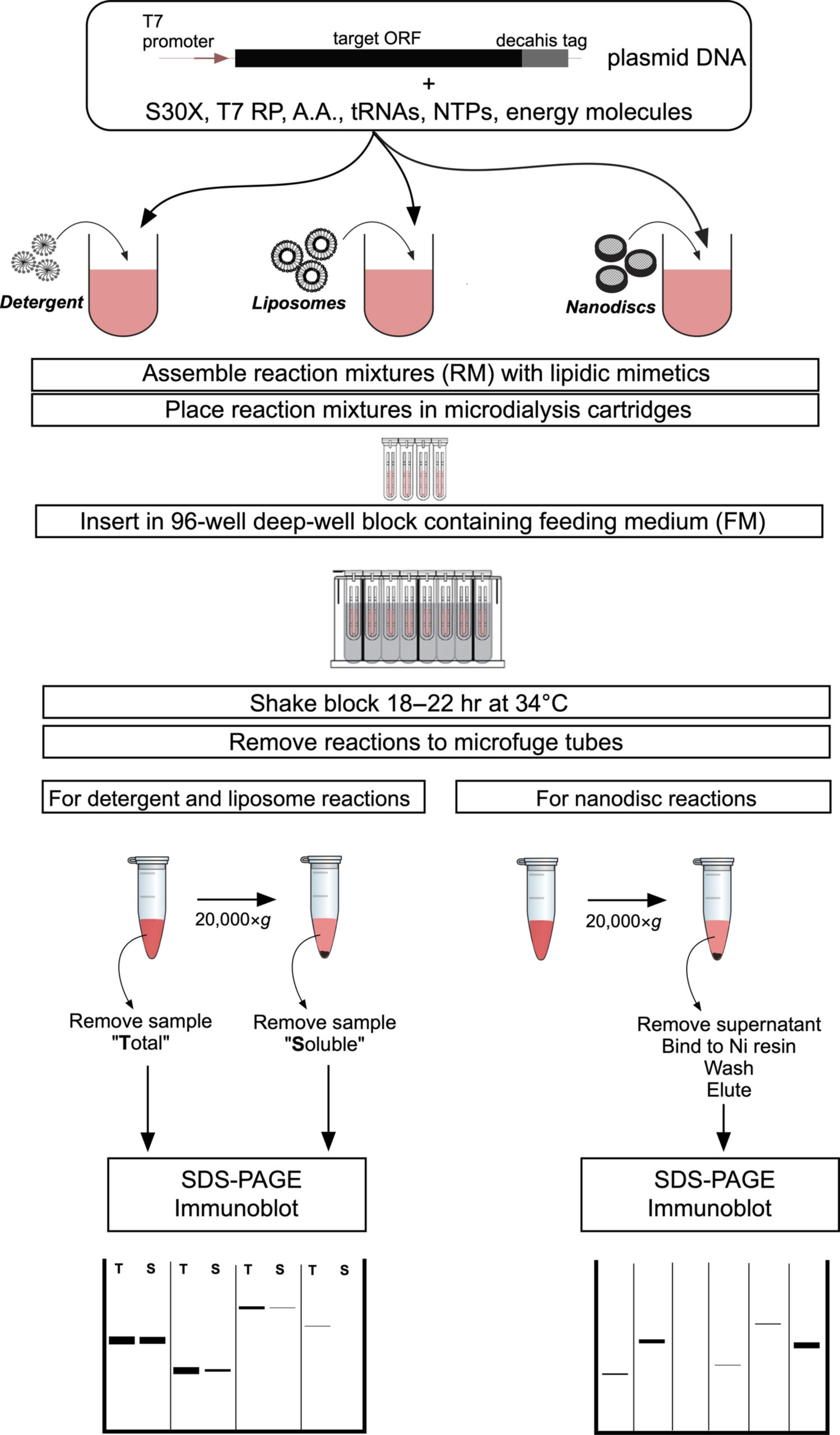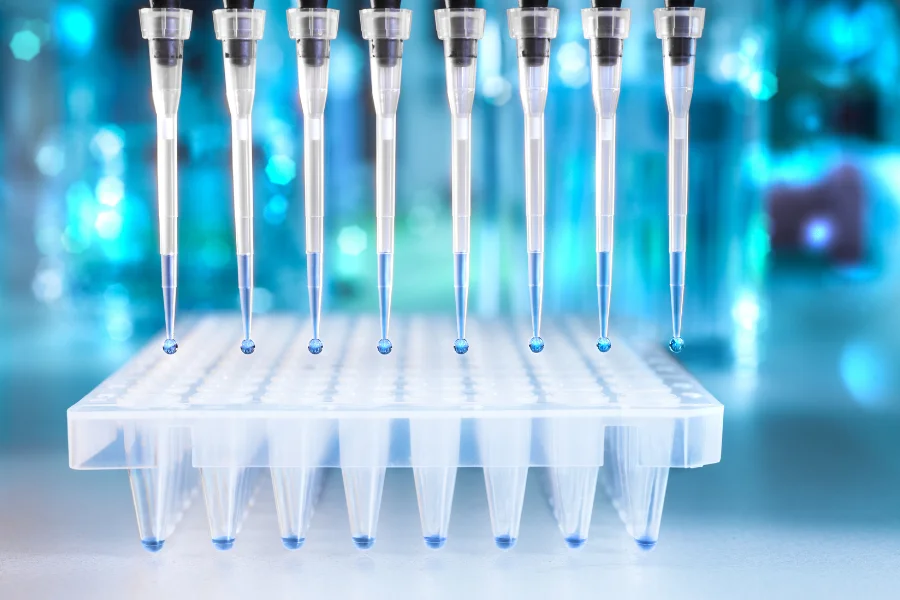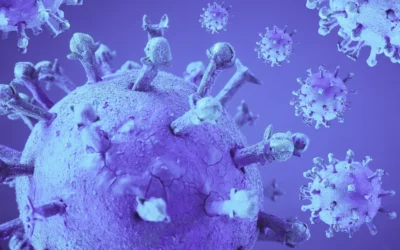High-throughput screening (HTS) methods study the interactions between a great number of chemical compounds or biomolecules and a specific target, in a robust, highly reproducible and time-efficient format. This screening technology was motivated by the increased number of compounds and molecules that needed to be tested, in the search for novel drugs and therapies.
HTS has widespread applications including drug discovery, enzyme engineering, and discovery and screening of chemical probes, small molecules and lipopeptides [1].
Limitations of In Vivo HTS Methods
In vivo HTS approaches are not well-suited for evaluating interactions between two molecules, such as identifying small molecules or antibodies against a specific target, nor when the molecule being tested is toxic to host cells.
Indeed, in vivo screening has limitations when it comes to analyzing specific molecular interactions, such as those between an antibody and its target. These types of analyses are better suited for in vitro screening systems, where such interactions can be modeled more precisely in a controlled environment.
Furthermore, toxic molecules – whether small molecules or otherwise – pose a challenge for in vivo HTS. Toxicity can induce physiological effects that interfere with the assessment of pharmacological properties or compound efficacy, making the interpretation of results more difficult.
Advantages of Cell-Free HTS Approaches
In contrast, cell-free methods allow the synthesis and screening of toxic or insoluble proteins, and the incorporation of unnatural or isotope-labelled amino acids into the proteins being synthesized. Furthermore, cell-free methods enable a much faster screening than in vivo methods, since cell transformation/transfection and growth processes are omitted, thus reducing the overall experimental time [1].
Categories of Cell-Free HTS Applications
Cell-free HTS applications are classified in :
– On-Chip Technologies (Microarrays) : based on the immobilisation of the expressed proteins into treated surfaces without the source RNA or DNA.
– In Vitro Display Technologies : These methods link genotype and phenotype by covalent linkage between proteins, ribosomes, DNA and RNA. After protein expression, the genotype-phenotype complexes are directly screened and tested for activity, and the linked-genetic sequence is used for subsequent rounds of enrichment [1].
Cell-Free Systems for Complex Biomolecule Screening
The more recent in vitro display and microarray techniques have focused on the screening of more complex biomolecules, such as membrane proteins (MPs) and proteins that require multiple disulfide bonds, and cell-free systems can provide an effective response to these challenges.
A recently reported cell-free HTS study has shown its advantageous performance in the screening of eukaryotic MP expression in diverse lipidic mimetics [2]. MPs are the targets of about half of the known drugs and so they are of great interest for structure-function characterizations. Nonetheless, their expression in heterologous cell-based systems and the following purification are difficult to carry out.
Moreover, eukaryotic MPs are sometimes more successfully expressed using eukaryotic expression systems, but these are labour-intensive and expensive and give very low quantity of MPs.
High-Throughput Screening of Membrane Proteins
Hence, a cell-free HTS workflow was developed for the screening of 61 eukaryotic MPs and, for each protein, its expression was tested in various lipidic mimetics, namely two detergents, two liposomes, and two nanodiscs (Figure 1).
The study showed that 35 MPs (57% of all tested MPs) could be expressed, in a soluble fraction, in at least one of the lipidic mimetics.
The cell-free system allowed the production of a higher number of MPs, compared with an E. coli-based system. The cell-free workflow enabled the parallel screening of six lipidic mimetics, using microdialysis devices and a 96-well plate, thus providing an efficient high throughput system for the screening of eukaryotic MPs in 48-72 h. Additionally, the system could be easily expanded to include other lipidic mimetics. The obtained results clearly demonstrate the utility of cell-free systems for the expression and screening of eukaryotic MPs.
Future Perspectives of Cell-Free HTS
Other cell-free HTS studies have also been reported, for the expression and screening of human MPs [3] and soluble cytoplasmic proteins [4].
In future, advances in data analysis tools and developments in miniaturization and automation of the screening processes will surely improve the high-throughput screening of biomolecules using cell-free transcription and translation systems.

Figure 1 – Workflow for high-throughput cell-free screening of eukaryotic membrane proteins. Reproduced from [2].
Unlock the Potential of Cell-Free HTS
Cell-free protein production is revolutionizing high-throughput screening, enabling faster, more efficient, and more versatile research across multiple fields. Whether you are exploring drug discovery, enzyme engineering, or membrane protein analysis, adopting a cell-free HTS approach can significantly accelerate your findings.
Written by Luísa Silva, PhD and scientific expert.
Synthelis Biotech
Are you ready to integrate cutting-edge cell-free technology into your research?
With more than 15 years of experience and a patented approach to produce membrane proteins in proteoliposome format, Synthelis Biotech can help you and strongly accelerate your project based on membrane proteins and almost any other targets.
Contact us today to explore how our expertise can support your high-throughput screening needs!
Sources



